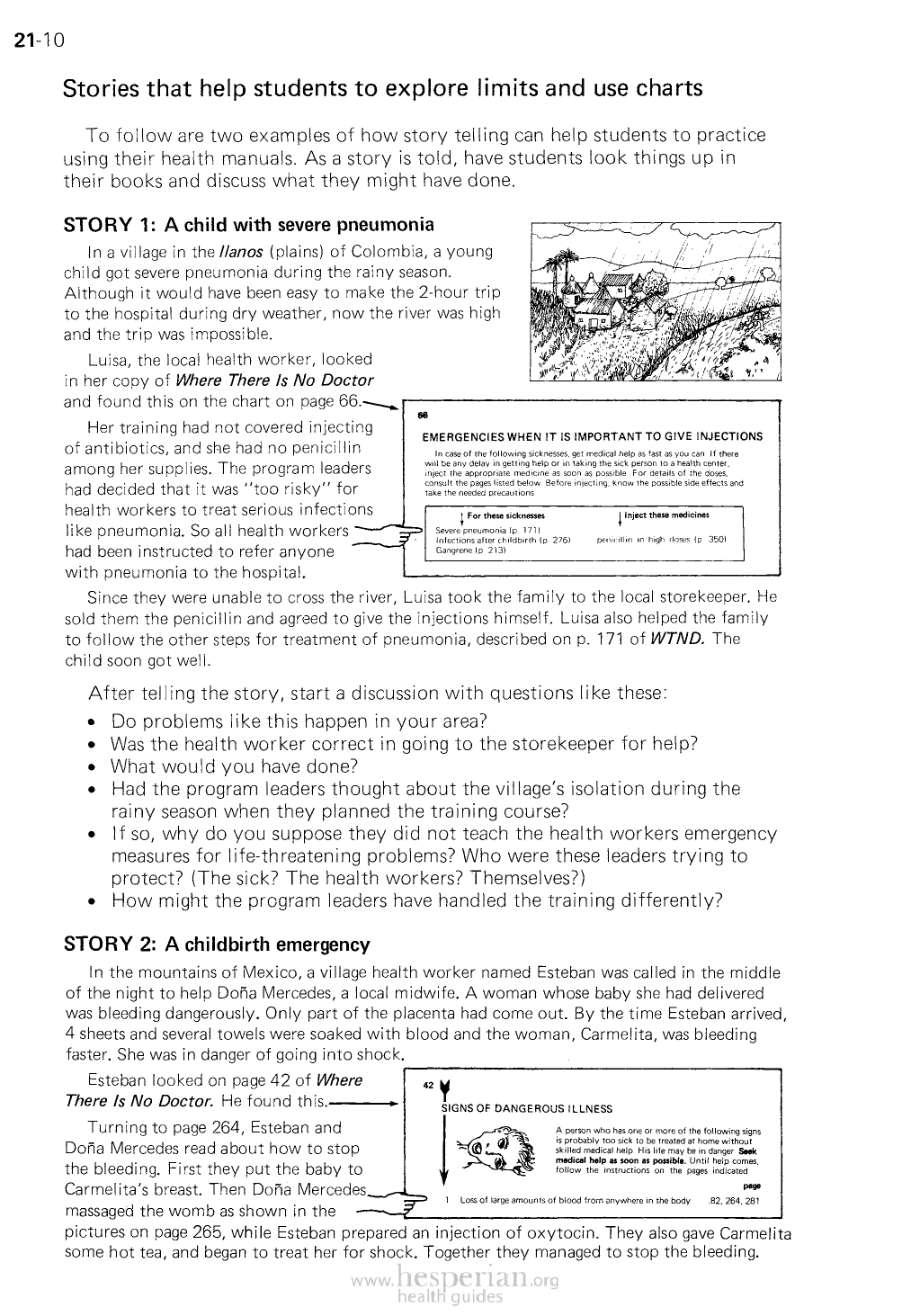
21-10
Stories that help students to explore limits and use charts
To follow are two examples of how story telling can help students to practice
using their health manuals. As a story is told, have students look things up in their
books and discuss what they might have done.
STORY 1: A child with severe pneumonia
In a village in the llanos (plains) of Colombia, a young
child got severe pneumonia during the rainy season.
Although it would have been easy to make the 2-hour trip
to the hospital during dry weather, now the river was high
and the trip was impossible.
Luisa. the local health worker, looked
in her copy of Where There Is No Doctor
and found this on the chart on page 66.
Her training had not covered injecting
of antibiotics, and she had no penicillin
among her supplies. The program leaders
had decided that it was “too risky” for
health workers to treat serious infections
like pneumonia. So all health workers
had been instructed to refer anyone
with pneumonia to the hospital.
Since they were unable to cross the river. Luisa took the family to the local storekeeper. He
sold them the penicillin and agreed to give the injections himself. Luisa also helped the family
to follow the other steps for treatment of pneumonia, described on p. 171 of WTND. The child
soon got well.
After telling the story, start a discussion with questions like these:
• Do problems like this happen in your area?
• Was the health worker correct in going to the storekeeper for help?
• What would you have done?
• Had the program leaders thought about the village’s isolation during the rainy
season when they planned the training course?
• If so, why do you suppose they did not teach the health workers emergency
measures for life-threatening problems? Who were these leaders trying to
protect? (The sick? The health workers? Themselves?)
• How might the program leaders have handled the training differently?
STORY 2: A childbirth emergency
In the mountains of Mexico, a village health worker named Esteban was called in the middle
of the night to help Dofia Mercedes, a local midwife. A woman whose baby she had delivered
was bleeding dangerously. Only part of the placenta had come out. By the time Esteban
arrived, 4 sheets and several towels were soaked with blood and the woman, Carmelita, was
bleeding faster. She was in danger of going into shock.
Esteban looked on page 42 of Where
There Is No Doctor. He found this.
Turning to page 264, Esteban and
Dofia Mercedes read about how to stop
the bleeding. First they put the baby to
Carmelita’s breast. Then Dona Mercedes
massaged the womb as shown in the pictures on page 265, while Esteban prepared an
injection of oxytocin. They also gave Carmelita some hot tea, and began to treat her for shock.
Together they managed to stop the bleeding.